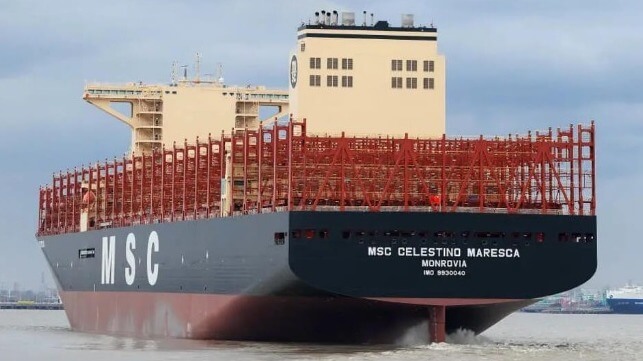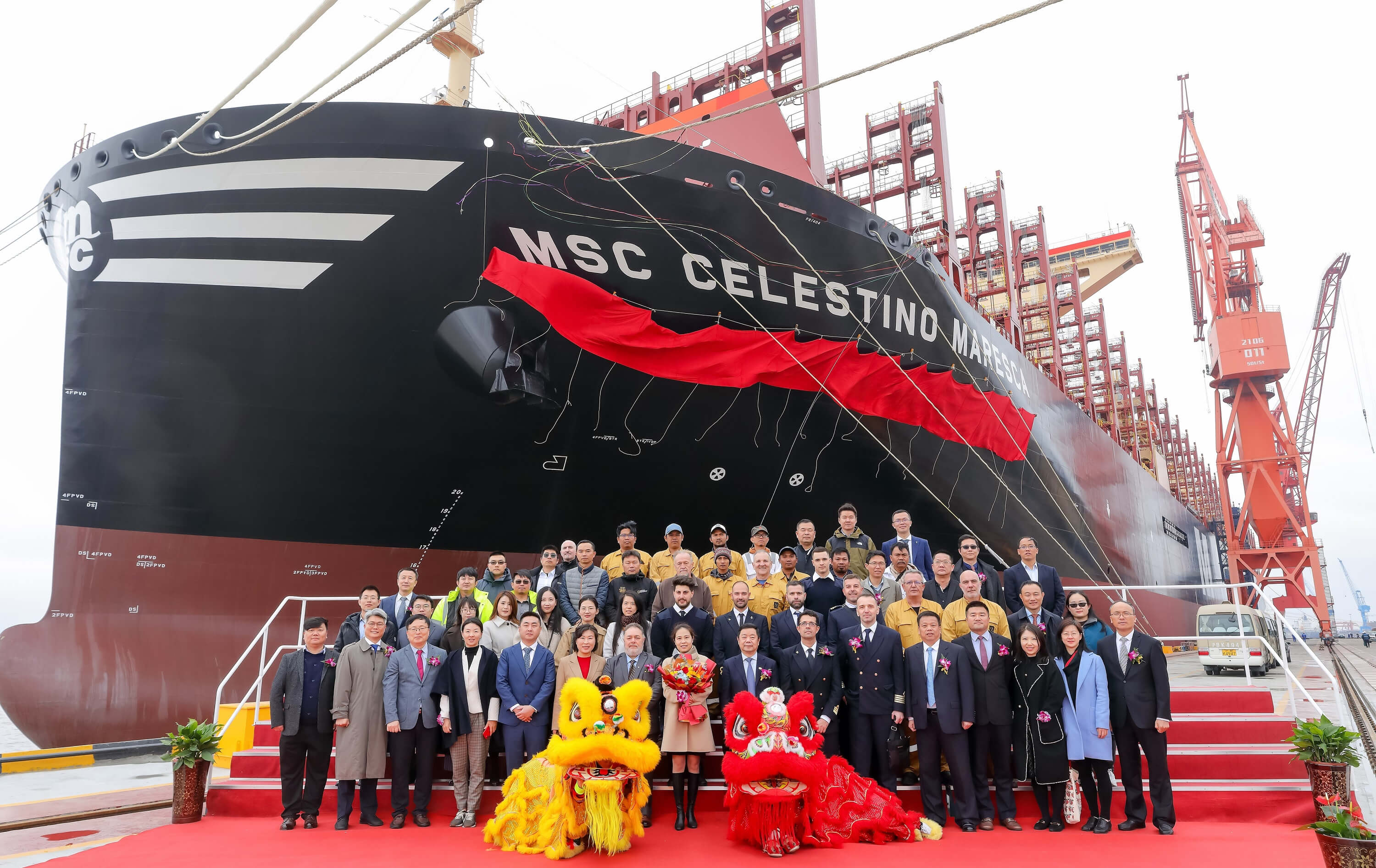MSC Accepts Next Ultra Large as Era of Big Boxship Begins

The era of the big boxship has begun. Since the middle of March 2023, both MSC and OCCL have begun phasing their new ultra large container vessels into the services with competitors including Hapag-Lloyd and Ocean Network Express (ONE) due to also take delivery of their first giant boxships each hovering around the 24,000 TEU capacity level. This comes however as the industry continues to idle vessels due to low demand.
Delivery of the next of the vessels, the MSC Celestino Maresca, was completed on March 23 to the Bank of Communications Financial Leasing Co. which is chartering the vessels to Mediterranean Shipping Company (MSC). She joined the fleet just a week after her sistership, MSC Tessa, became the first of the carrier's new class to enter service. MSC is phasing the ULCVs into two of its European trade routes, Lion and Jade, in the coming weeks and expects to continue to take delivery on the class at the rate of one or two new ships per month. MSC has 14 ultra large vessels under construction.
The MSC Celestino is the second 233,000 dwt vessel delivered this month by China State Shipbuilding’s Hudong-Zhonghua Shipbuilding Group at its Changxing shipyard in Shanghai. All the ships have the same dimensions with a length of 1,312 feet with this group having a nominal capacity of 24,116 TEU. The shipyard highlights that it is an independent design that incorporates new elements for efficiency including technology and automation as well as to reduce energy consumption and emissions. The shipyard is reporting that it filled more than 20 technical gaps to develop the 24,000 TEU vessels and received 69 patents.
“The company made the best use of the huge body of the ship, and carried out a tailor-made fine subdivision layout for the hull line, effectively increasing the packing capacity, and achieving the largest number of containers in the same size ship,” writes Hudong-Zhonghua. They are touting the “use of information-based construction methods such as digital test chambers to continuously breakthrough production bottlenecks and continue to improve quality and efficiency.”
CSSC highlights that the shipbuilding company has now delivered in the past nine months five of the world’s largest containerships, which they are calling “Super Cargo Kings.” They believe that this design can be built into a brand as they continue to expand Chinese shipbuilding.
MSC is feathering these new ships onto its routes at weekly intervals. The first of the ships, also from Hudong-Zhonghua, MSC Tessa, started service on March 16 on the Lion route which takes her from China to Portugal, the Netherlands, Belgium, the UK, and Morocco, before returning to Singapore and China. MSC Celestino Maresca follows starting the route on March 30 and a third ship of the class, MSC Raya, starts on the route on April 13. In addition, this week, MSC Irina, started on the Jade route which takes her from China to southern European ports.

Naming ceremony for the second ultra large delivered by the shipyard this month to MSC (Hudong Zhonghau)
The entry of these new ships is prompting MSC to rearrange broader deployments, but the largest container carrier has also been moving aggressively to idle capacity. Alphaliner issued an update this week showing that MSC has a dozen large containerships idle with nearly 100,000 TEU of capacity, not counting the MSC Irina which was waiting to enter service. Six of the vessels each had a nominal capacity of over 7,500 TEU. It is however a small faction of MSC’s total capacity of 4.8 million TEU.
MSC is far from alone in idling capacity. Maersk leads Alphaliner’s report with a total of 29 ships reported to be currently laid up. They calculate that this represents 281,400 TEU of capacity. Maersk has a total capacity of nearly 4.2 million TEU.
“When excluding all ships which are in shipyards for general repairs or class renewal, the commercially idle fleet consists of 122 ships (721,300 TEU),” writes Alphaliner. As of March 13, Alphaliner’s inactive fleet report shows that a total of 300 containerships of over 500 TEU were out of active service. That represents nearly 1.6 million TEU or about six percent of the industry’s total capacity. The figure is down slightly in the past two weeks as the industry moves past the disruptions from the Lunar New Year holiday, but it is still more than double the 2.6 percent idle a year ago.
Alphaliner also recently calculated that 31 large containerships with a capacity of up to 24,000 TEU are due to enter service. In addition to the 14 vessels with the 24,000TEU capacity, MSC has 19 vessels each over 13,000 TEU capacity due for delivery in 2023. OOCL last week placed OOCL Spain, a 24,000 TEU vessel, into service to North Europe and has five more to phase into operations.
Hapag-Lloyd is also preparing for its first ULCV, Berlin Express, which is the first of 12 vessels and the carrier’s first LNG dual-fuel newbuild. ONE also has six of the ULCV vessels due to begin delivery.
Analysts highlight that this is also the beginning of the wave of deliveries coming from the construction orders placed in 2020 and 2021. The larger portion of these deliveries comes in 2024.
